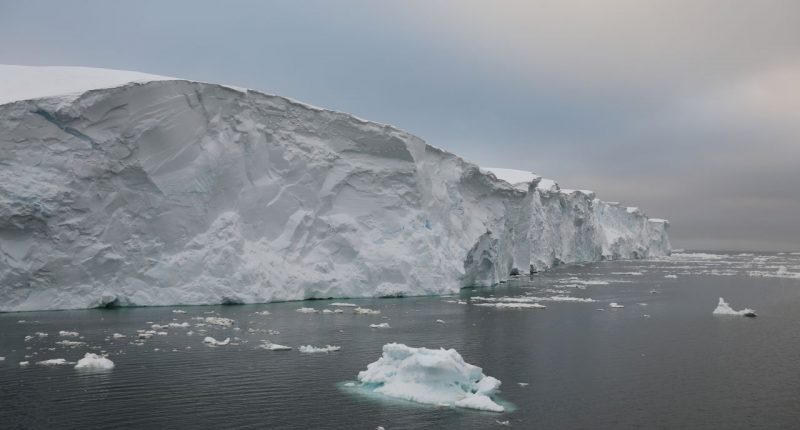The “doomsday” implied in the term “Doomsday Glacier” the nickname given to the Thwaites Glacier in Antarctica may be coming soon. But what will that day actually be like?
As noted in a scary paper in the journal Nature Geoscience by a team led by geological oceanographer Alastair G. C. Graham, the Thwaites Glacier in Antarctica may be closer to a major disintegration event than previously thought.
In our understanding of this situation This new study involved analyzing ridges on the sea floor. These rib-like formations reveal strong evidence of the glacier’s location as the tide nudged it each day. This is different from previously gathered data about the glacier, which was pulled from satellite maps of the ice as it edges further and further toward a total collapse into the ocean.
We now know a sudden melting event occurred over the course of six months at some point in the past 200 years. In that brief span, the section of glacier causing those formations on the ocean floor retreated at twice the rate that satellite photos had been able to detect. That means in addition to the steady loss of mass scientists already knew about, there are also rarer, and scarier, pulses of very rapid disintegration.
“Thwaites is really holding on today by its fingernails, and we should expect to see big changes over small timescales in the future”
Robert Larter one of the study’s co-authors, said in a statement to the press.
A sudden glacial breakup will see a galvanic quantity of new water suddenly dumped into the ocean, and it’s hard not to imagine the water rising all at once, like when you dunk a big ice cube into a full glass.
And perhaps an overnight, catastrophic inundation could happen, but the available evidence from this new study points to even the “doomsday” scenario spanning six months at the least compared to the first scenario, six months is enough time for people who live in coastal neighborhoods to evacuate.
You can see for yourself what the collapse of the Thwaites Glacier would look like thanks to Sea Level Rise Viewer, a web application created by the National Oceanic and Atmospheric Administration (NOAA). This redraws any US coastline to factor in any given amount of sea level rise (in 12-inch increments).
It would, for instance, devastate southern Louisiana and Mississippi. In New York, however, Manhattan would get merely splashed. By no means this is intended to soft-pedal the horrors of sea level rise, but it’s worth noting that scientists have expressed their qualm about attaching apocalyptic significance to Thwaites in particular, notably in an article by Jackson Ryan of CNET. “On the one hand, it is a wakeup call, aka take these things seriously,” NASA earth scientist Eric Rignot told Ryan. “On the other hand, it summarizes the situation as if there was only one bad glacier out there.”
“Doomsday Glacier moniker might actually do more harm than good”
“One of the chief reasons scientists feel uneasy about the phrase is that it suggests we’re already doomed”
As Ryan points out in mentioned article
“Doom” is a tricky rhetorical device to use effectively in this context, since, as the IPCC’s sixth report pointed out, better climate policies are likely to result in climate benefits decades from the time they go into effect perhaps as much as 30 years down the road, according to chapter 4 of the report. So we’re not doomed yet, at the same time nothing we do now may benefit present young adults until they’re on the verge of old age including myself.
In short Thwaites is likely to hit the critical point scientists fear, and fully disintegrate. When and if it does, the results may well be cataclysmic, but they won’t be apocalyptic.






